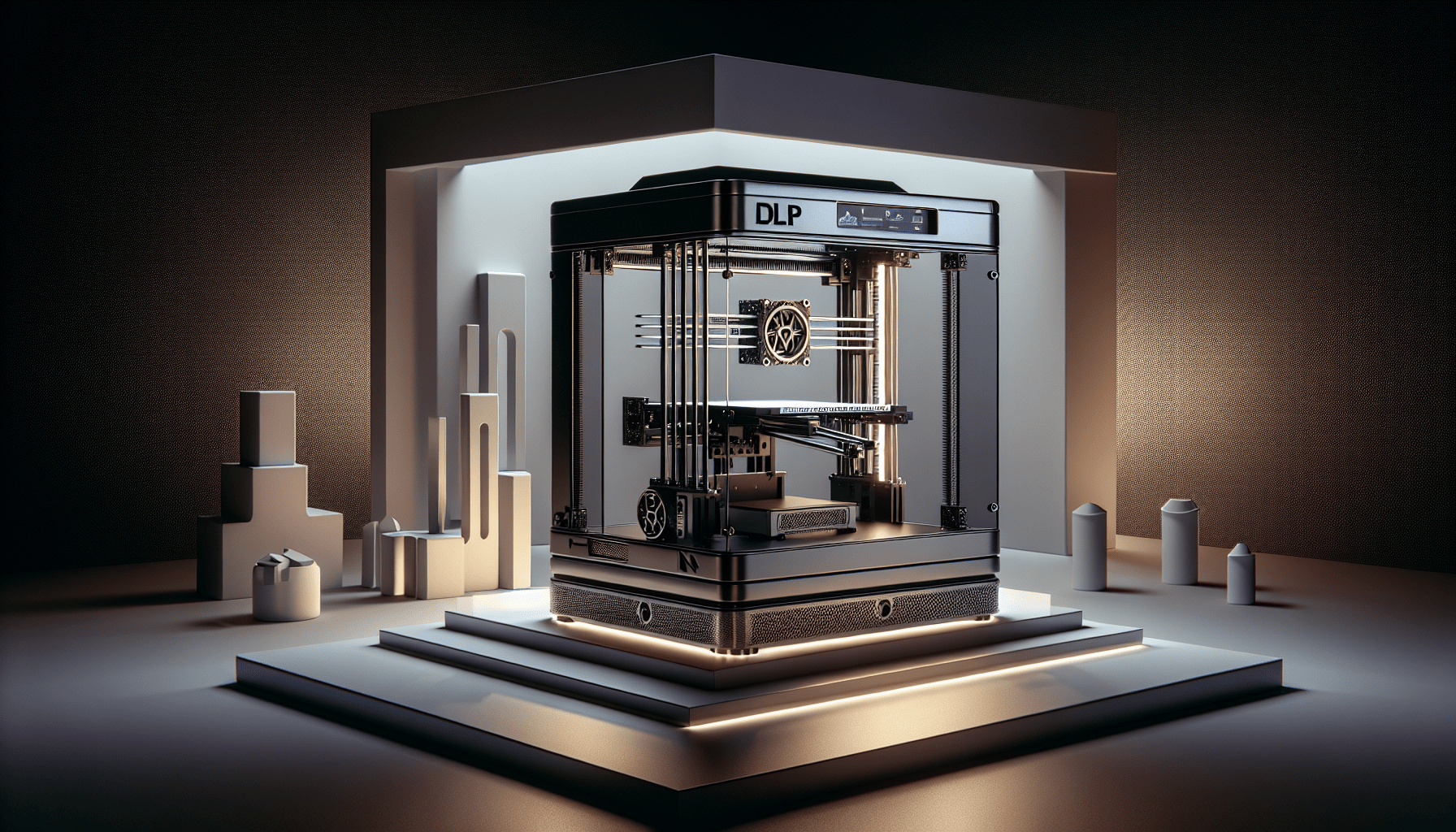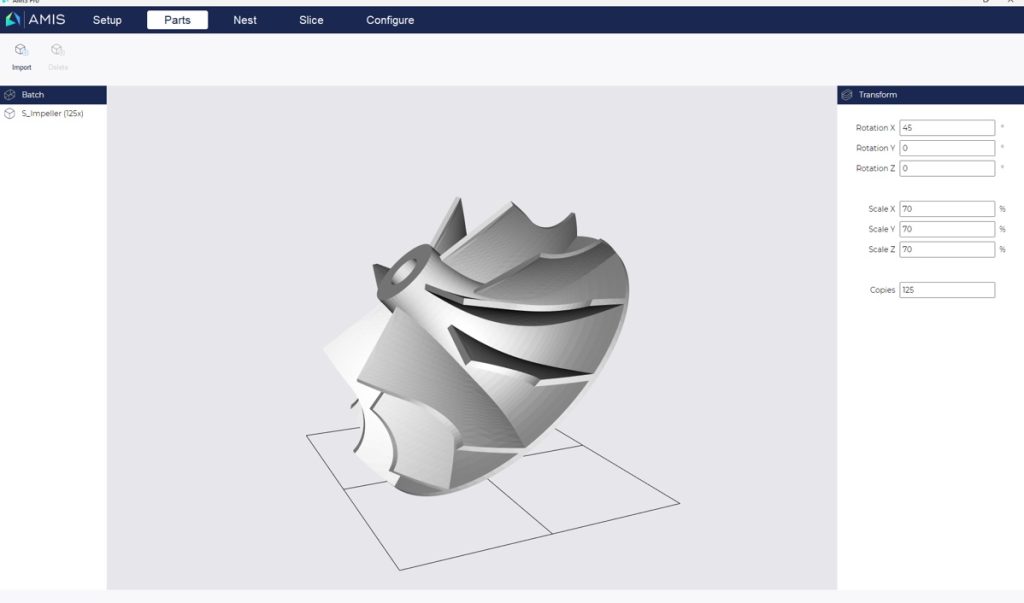FLASHFORGE 3D Printer AD5M, CoreXY 600mm/s High-Speed Printer with 1-Click Auto Leveling, High-Temp Direct Drive Extruder, 3s Quick-Swap Nozzle, 220×220×200mm Build Volume
$259.00 (as of June 2, 2025 19:53 GMT +00:00 - More infoProduct prices and availability are accurate as of the date/time indicated and are subject to change. Any price and availability information displayed on [relevant Amazon Site(s), as applicable] at the time of purchase will apply to the purchase of this product.)Tethon 3D, the Nebraska-based leader in ceramic 3D printing, has unveiled the groundbreaking Bison Bio DLP 3D printer, designed in collaboration with Carima for the medical research sector. The desktop-sized bioprinter supports Tethon 3D’s Tethon LAP photoinitiator and GelMA hydrogel bioink, offering three build sizes and superior cell viability for enhanced biomedical applications, including regenerative medicine. In partnership with Cell Bark Innovation and under the guidance of bioprinting expert Dr. Hojae Bae, the Bison Bio DLP aims to revolutionize healthcare through personalized implants and 3D-printed organs. Priced competitively at $19,950, Tethon 3D’s latest innovation is set to make significant strides in an industry where accessibility and cutting-edge technology are paramount. Have you ever wondered what happens when cutting-edge technology meets the world of biotechnology? That’s exactly what we’re diving into today with Tethon 3D’s latest innovation: the Bison Bio DLP 3D Printer. If you’re someone who loves to keep an eye on the latest advancements in the medical field, then you’re in for a treat.

$30 off $400+ Anycubic Products with code AC30OFF
Company Overview
Tethon 3D is a pioneer in the field of ceramic 3D printing and is based in Nebraska. Known for its innovative approaches and top-notch expertise, the company has made a significant mark in the industry. Recently, Tethon 3D has expanded its horizons by launching the Bison Bio DLP 3D printer. This new development not only spotlights the company’s commitment to innovation but also highlights its strategic focus on advancing the medical sector.
The Legacy of Innovation
Tethon 3D’s journey has been one of consistent growth and evolution. Initially focused on ceramic 3D printing, the company has gradually diversified its capabilities and product lineup to include various applications, particularly in the medical and research sectors.
Expansion into Bioprinting
This new venture into bioprinting with the Bison Bio DLP printer marks a substantial leap for Tethon 3D. By tapping into bioprinting, the company aims to provide research and medical institutions with reliable tools that can accelerate advancements in healthcare.
New Bioprinter Features
Here’s where it gets really exciting. Partnering with Carima, Tethon 3D has designed the Bison Bio DLP 3D printer to be a desktop-friendly device aimed specifically at Research and Development (R&D) in the medical sector.
Compact Design for R&D
The Bison Bio is desktop-sized, making it an ideal fit for laboratory environments where space is often a premium. Despite its compact size, it offers robust functionality aimed at facilitating cutting-edge research and biomedical applications.
Compatibility
Moreover, this bioprinter is compatible with Tethon 3D’s Tethon LAP photoinitiator and GelMA hydrogel bioink. These materials are crucial for creating bioprinted structures that are both functional and replicable, addressing a significant need in medical research.
Buy Photon Mono M5 Get Free 1KG Resin
Key Collaborations
Some partnerships are destined to turn heads. Tethon 3D has joined forces with Cell Bark Innovation for bioink production. Such collaborations add another layer of expertise and resource accessibility to the project.
Partnering with Cell Bark Innovation
Cell Bark Innovation is renowned for its advanced bioink solutions. By joining forces, both companies aim to bring the best of their capabilities to the table, ensuring that end-users get top-of-the-line results.
Expert Guidance with Dr. Hojae Bae
To steer this ambitious ship, Tethon 3D has onboarded Dr. Hojae Bae as an experienced bioprinting advisor. With over 140 publications to his name, Dr. Bae brings an unparalleled level of expertise and insight to the project. His presence ensures that the Bison Bio DLP 3D printer remains at the forefront of bioprinting technology.
Technological Advancements
The Bison Bio DLP 3D printer isn’t just another bioprinter; it represents a significant leap forward in technological advancements with a focus on enhancing healthcare and biomedical research.
Enhancing Healthcare and Biomedical Research
One of the primary aims of this new bioprinter is to revolutionize the field of regenerative medicine. By providing extremely high cell viability, the printer ensures that the bioprinted scaffolds have high percentages of live cells. This translates to more successful medical applications, such as tissue engineering and organ regeneration.
Customizable Build Sizes
Another stand-out feature is its customizable build sizes, accommodating various research needs. Whether you need tiny structures for cellular studies or larger frameworks for tissue engineering, the Bison Bio DLP 3D printer has you covered.
| Build Size Option | Dimensions (mm) |
|---|---|
| Small | 30×20 |
| Medium | 57×32 |
| Large | 96×54 |

Product Specifications
Understanding the technical specifications can help you better appreciate what this printer brings to the table.
Desktop-Friendly Dimensions
The bioprinter has dimensions of 24 × 24 × 24 inches, making it an easily accommodatable unit for most laboratory settings. Weighing in at 75 lbs, it’s portable enough for easy relocation within a lab environment but sturdy enough to offer consistent performance.
Pricing and Accessibility
With a price tag of $19,950, the Bison Bio is designed to be accessible within the bioprinting market. Given the printer’s advanced features and capabilities, this pricing is quite competitive and opens up many opportunities for smaller labs and institutions to delve into bioprinting.
Bioink Details
The type of bioink you use can make or break your 3D bioprinting endeavors. The Bison Bio DLP 3D printer offers compatibility with the specialized GelMA hydrogel and LAP bioink sold by Tethon 3D.
GelMA Hydrogel and LAP Bioink
These materials are available in powder form, allowing you to prepare them according to the specific needs of your research or project. This flexibility ensures that you can adjust the concentration and composition as required, making it a highly versatile choice.
Pricing for Bioinks
To give you an idea, a 2-gram quantity of GelMA is priced at $175. While this might seem steep initially, the quality and effectiveness of the formulation justify the cost, especially for high-stakes medical applications.
Market and Industry Context
In today’s rapidly evolving medical industry, the Bison Bio aims to bring about significant improvements in patient outcomes through advancements in bioprinting technology.
Targeting Improved Patient Outcomes
The primary focus is on creating personalized medical implants, functional tissues, and even 3D-printed organs. By offering customized solutions, the Bison Bio aims to meet the specific needs of individual patients, leading to better treatment outcomes.
Competitors and Market Position
The bioprinting industry is heating up, with various companies focusing on different aspects of the technology. For instance, firms like BIO INX are known for their ready-to-use bioinks, which could be perceived as more user-friendly for some applications. However, the customizable and advanced features of the Bison Bio DLP 3D printer set it apart as a tool designed for detailed and precise biomedical research.
Additional Innovations
The launch of the Bison Bio isn’t happening in isolation. There have been several other notable innovations in the bioprinting field that further emphasize the growing significance of this technology.
Cost-Effective Solutions
For example, Cardiff University has developed a cost-effective Lego 3D bioprinter aimed at making tissue fabrication more affordable. Such low-cost alternatives contribute to making bioprinting technology more accessible on a global scale.
Global Advancements
While not in direct competition with the Bison Bio, these innovations highlight the diverse approaches being taken to solve similar medical challenges. Each new advancement, whether focused on cost or functionality, helps push the entire industry forward.
Conclusion
In wrapping up, the launch of the Bison Bio DLP 3D printer by Tethon 3D marks a notable advancement in the field of bioprinting. With its extensive features, robust capabilities, and strategic collaborations, it holds the potential to drive significant improvements in medical research and patient care.
We hope you found this comprehensive look at the Bison Bio DLP 3D printer both informative and engaging. Whether you’re a medical researcher, a tech enthusiast, or someone simply interested in the latest innovations, there’s no denying that Tethon 3D is paving the way for future breakthroughs. So, what do you think? Could this be the game-changer the medical field has been waiting for? Let us know your thoughts!
$30 off $400+ Anycubic Products with code AC30OFF








